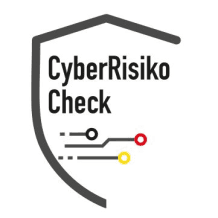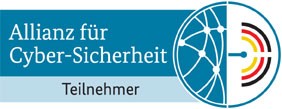Introduction to the Secure Development Lifecycle (SDL)
The Secure Development Lifecycle (SDL) is a systematic approach to integrate security into the entire software development process. The goal is to identify and rectify cyber threats early, before they become visible in the finished software. SDL is crucial in today's digital world, as security vulnerabilities can lead to significant financial losses and damage to a company's reputation.
Main Elements of the Secure Development Lifecycle
The SDL is based on several key steps that ensure security is considered at every stage of the development process:
Requirements Analysis
In this phase, security requirements are defined to ensure all stakeholders have a common understanding of the necessary security measures. By addressing security from the beginning, potential issues are proactively managed.
Design Phase
In the design phase, the software architecture is created with security aspects in mind. Threat models are utilized to identify potential attack vectors and plan appropriate countermeasures.
Implementation
During implementation, it is essential to use secure programming techniques and conduct regular code reviews. This minimizes the likelihood of security vulnerabilities that would be costly to fix later.
Testing Phase
During the testing phase, extensive security testing is performed. This includes penetration testing, static and dynamic code analysis, and fuzz testing to ensure the software is robust against attacks.
Release and Maintenance
After the software is released, regular security updates and patches must be ensured. Furthermore, it is vital to continuously monitor the system for new vulnerabilities.
Benefits of a Secure Development Lifecycle
The implementation of an SDL offers numerous benefits:
Reduction of security risks: By early identification and rectification of vulnerabilities, the risk of security breaches is significantly reduced.
Cost efficiency: By incorporating security into the development process, costly mistakes that could be very expensive to avoid during later software maintenance are avoided.
Customer trust: A secure software product enhances customer confidence and improves brand image.
Challenges in Implementing SDL
Despite its advantages, there are several challenges in adopting an SDL:
Resistance from developers: Integrating security practices can increase development efforts, which may lead to resistance from developers.
Consistency: The application of SDL practices must be consistent across various projects and teams to be effective.
Continuous education: The threat landscape is dynamic, requiring ongoing training and adjustments to security practices.
Conclusion
The Secure Development Lifecycle is an indispensable framework for modern software development. Secure software helps minimize the risk of cyber attacks, enhances user trust, and ensures compliance with regulatory requirements. By integrating security measures early and continuously, a company can significantly improve the quality of its software and ensure long-term success in an increasingly digital world.
Secure Development Lifecycle in Germany: Current Developments
The importance of the secure development lifecycle in Germany is continuously growing. According to recent studies by the Federal Office for Information Security (BSI), German companies are increasingly affected by cyber threats. The Bitkom Association reports that 84% of German companies have been victims of cyber attacks in the last two years.
Particularly in the area of secure development lifecycle, the following trends are evident:
Increasing investments in preventive security measures
Heightened awareness of holistic security concepts
Integration of secure development lifecycle into existing compliance frameworks
EU Compliance and Secure Development Lifecycle
With the introduction of the NIS2 directive and tightened GDPR requirements, German companies must adapt their security strategies. The Secure Development Lifecycle plays a central role in meeting regulatory requirements.
Key compliance aspects:
Documentation of security measures
Regular review and update
Demonstrating effectiveness to regulatory authorities
Practical Implementation in Corporate Daily Life
Incorporating secure development lifecycle into corporate daily life requires a structured approach. Experience shows that companies benefit from a phased implementation that considers both technical and organizational aspects.
Think of the secure development lifecycle as an insurance for your company: The better you are prepared, the lower the risk of damage from security incidents.
Further Security Measures
For a comprehensive security strategy, you should combine secure development lifecycle with other security measures:
Vulnerability Management - Systematic vulnerability management
Penetration Testing - Comprehensive security testing
Security Hardening - Employee awareness
Incident Response Plan - Preparation for security incidents
Conclusion and Next Steps
Secure Development Lifecycle is an essential building block of modern cybersecurity. Investing in professional secure development lifecycle measures pays off in the long run through increased security and compliance conformity.
Would you like to optimize your security strategy? Our experts are happy to assist you in implementing secure development lifecycle and other security measures. Contact us for a non-binding initial consultation.
🔒 Act now: Have our experts evaluate your current security situation
📞 Request consultation: Schedule a free initial consultation on secure development lifecycle
📋 Compliance Check: Review your current compliance situation
📌 Related Topics: Cybersecurity, IT Security, Compliance Management, Risk Assessment
Best Practices for Secure Development Lifecycle
The successful implementation of secure development lifecycle requires a systematic approach. Based on our many years of experience in cybersecurity consulting, the following best practices have proven effective:
Strategic Planning
A well-thought-out strategy is the foundation for successful secure development lifecycle. You should consider the following aspects:
Define clear objectives and success metrics
Involve stakeholders early and establish responsibilities
Calculate realistic timelines and budgets
Conduct risk assessments and contingency planning
Technical Implementation
The technical implementation of secure development lifecycle should be carried out step by step:
Analysis of the current situation: Evaluate existing security measures
Gap analysis: Identify areas for improvement
Pilot project: Test run in a limited area
Rollout: Gradual expansion to the entire company
Monitoring: Continuous monitoring and optimization
Common Challenges and Solutions
When implementing secure development lifecycle, similar challenges frequently arise. Here are proven solutions:
Resistance to Change
Employees are often skeptical of new security measures. Successful change management strategies include:
Transparent communication about benefits and necessity
Training and educational measures
Involvement of opinion leaders as multipliers
Gradual introduction with quick wins
Budget Constraints
Limited resources require a prioritized approach:
ROI calculation for various measures
Phased implementation based on priorities
Utilization of synergies with existing systems
Consideration of compliance requirements
Success Measurement and KPIs
The success of secure development lifecycle measures should be measurable. Relevant metrics include:
Quantitative Metrics
Number of identified and resolved vulnerabilities
Reduction in average response time to security incidents
Improvement in compliance ratings
ROI of implemented security measures
Qualitative Assessments
Employee satisfaction and acceptance
Feedback from customers and partners
Evaluation by external auditors
Reputation and trust in the market
Future Trends and Developments
The landscape of cybersecurity is continuously evolving. Current trends that impact secure development lifecycle:
Artificial Intelligence: AI-driven threat detection and defense
Zero Trust Architecture: Trust is not assumed but continuously verified
Cloud Security: Adaptation to hybrid and multi-cloud environments
IoT Security: Protection of connected devices and systems
Quantum Computing: Preparation for post-quantum cryptographic methods
Companies that invest in secure development lifecycle today are optimally positioned for future challenges and opportunities.
Your Next Step
The implementation of secure development lifecycle is an investment in the future of your company. Our experts will assist you in developing a tailored solution that meets your specific requirements.
Start today:
📞 Free Consultation: Schedule a non-binding conversation
📋 Security Assessment: Get your current security situation evaluated
🎯 Tailored Solution: Develop a customized secure development lifecycle strategy
🚀 Implementation: Professional execution with ongoing support
Contact us today and take the first step towards a safer digital future.




